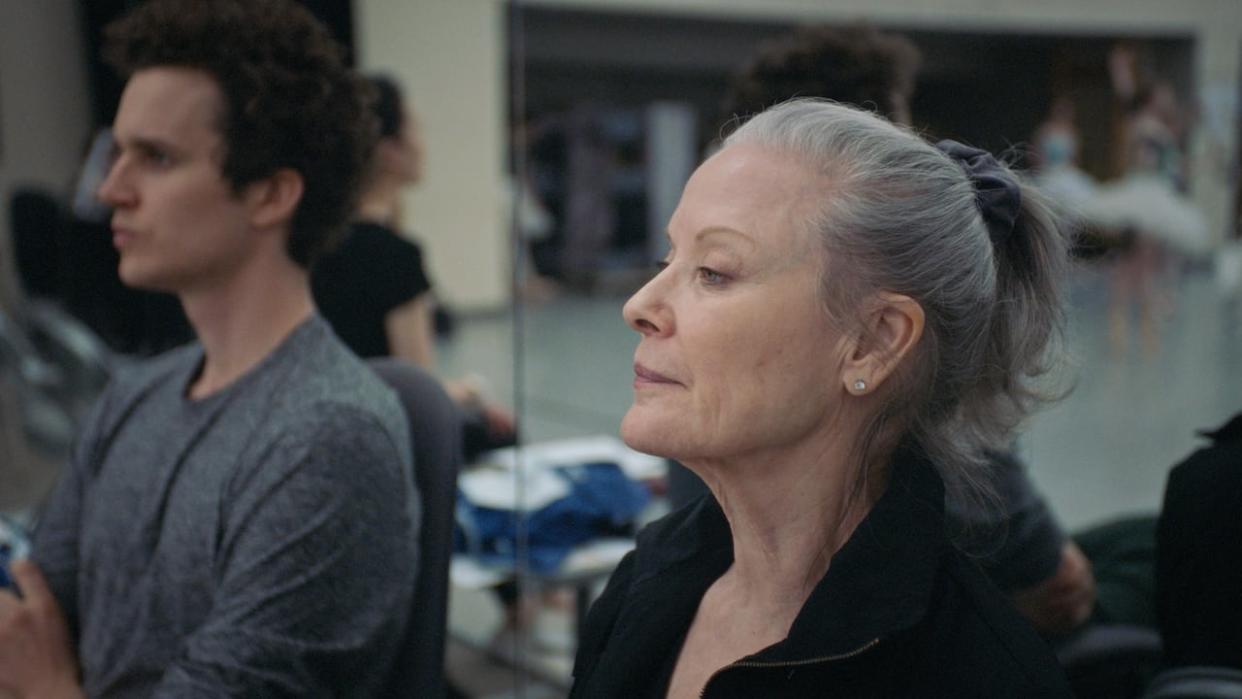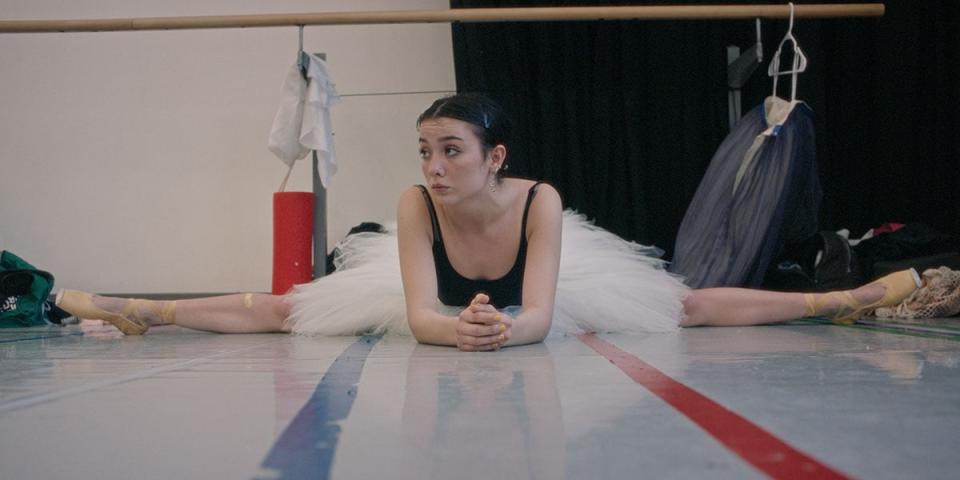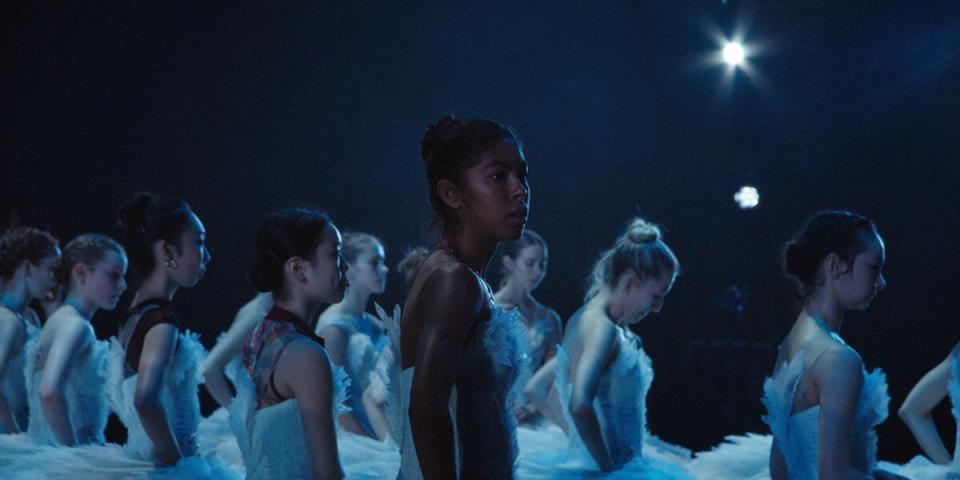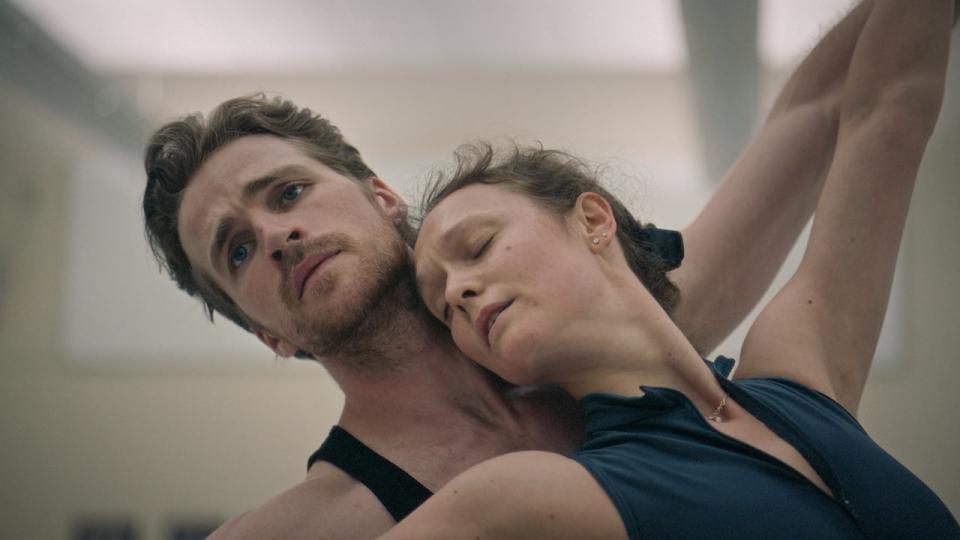Karen Kain's Swan Song probes her own growing pains — and ballet's

In a regal, dark green gown, Canadian performer Karen Kain walked Toronto International Film Festival's red carpet earlier this month with a smile on her face.
Her obvious excitement came from both the culmination of years of work on a specific project — and more than half a century's worth of work in her art.
"I just feel so astonished and grateful," Kain said to CBC News.
"At this point in my life, when I'm no longer performing or dancing, to have this wonderful film come out — I just think it's such a gift."
Kain, 72, was speaking of her documentary Swan Song, which follows her career as one of the most celebrated ballerinas in the country's history. She said that along with serving as one of the crowning artistic achievements of her career, Swan Song exists as just that: a swan song of her 50 years with the National Ballet of Canada.
WATCH | Swan Song trailer:
But instead of simply looking at Kain's decades-long vocation as a dancer, she said, its creators did something more.
Alongside documenting Kain's rise from a young ballerina in Mississauga, Ont., to a run as the prima ballerina at the National Ballet for more than two decades, it takes a somewhat probative look at her accomplishments and struggles as the ballet company's artistic director after that — although it focuses specifically on the last three years.
Looking back, that includes her near spur-of-the-moment instillation as the lead dancer in a 1971 production of Swan Lake, replacing an injured dancer only two years after graduating from Canada's National Ballet School.
Kain also looks back at her sustained partnership and mentorship by Russian dancer Rudolf Nureyev as she embarked on a whirlwind career that exposed a perfectionist streak.
That streak would simultaneously launch her to stratospheric heights and lead her to develop such a demanding and rigorous standard of excellence for herself that she once described her entire career, and dance in general, as not fun in the moment. To her, it was simply something to feel a sense of accomplishment over completing when the music had stopped. In the documentary itself, a wry Kain gives a sardonic laugh when reading the old article in which she delivered that quote.

Dancer Shaelynn Estrada rests during a rehearsal for Swan Lake. (TIFF)
But the documentary focuses more on the struggles of the National Ballet of Canada — which Kain took over as artistic director in 2005, when the company was in dire financial straits.
Only after righting that ship, and reshaping it into a once-again world-renowned name,did she reach the twin challenges Swan Song overwhelmingly concerns itself with. Those challenges were the COVID-19 pandemic — when the company's entire 2020-2021 slate was cancelled — and a wider attempt to connect with and reflect the interests of a young generation of dancers.
That culminated in the accidentally caught issue of racism embedded in the traditions of dance. During a 2020 production of Swan Lake, led by Kain as her last production before retirement, filmmakers captured a number of supporting dancers arguing for the right to dance without tights.
Those dancers, who were not white, argued that the protocol of wearing solely white tights was unnatural for them — the tradition of wearing tights in ballet is based on creating a seamless picture of the dancers' bodies, with the colour choice based on the majority white dancers in the field from its inception.
Tights, shoes and growing pains
Other ballet companies have navigated similar calls, with the Paris Opera Ballet finding tights and shoes that match dancers' skin tone over its 2020-2021 season after its then-director noted colleagues called Black dancers a "distraction" in 2016. Utah's Ballet West similarly allowed dancers to wear tights and shoes that matched their skin tone in 2020.
But Kain's decision to allow dancers to perform without tights for Tchaikovky's famous Swan Lake was a first for that ballet.
Seeing the struggle for the art form to adapt to something even so seemingly straightforward to its younger performers was something director Chelsea McMullan expressly wanted to explore.
"We also were really interested in the perspective of this new young, diverse generation of artists," McMullan said. "And so that was a POV we wanted in the film — and the tights and everything like that happened organically, but was something that was important for us to follow through."
"It's only a small step towards the actual change that needs to be seen in our industry," said Tene Ward, a dancer in Kain's production and one of the performers who raised the issue in the film.
"Ballet does have a long history of racism, so I hope that this is just the little thing that starts to push it forward and we can actually see a difference and be the change."

Tene Ward, centre, appears in a still from Chelsea McMullan's Swan Song. (TIFF)
Along with Swan Lake's principal dancer Jurgita Dronina telling CBC News it was a "brave decision" late in the taking, Canadian actor Neve Campbell, who served as executive producer on Swan Song, said it gives younger people an opportunity to connect with an art form that can still feel hostile to them.
"Even in a world where these dancers are being given the opportunity to have freedom, they're struggling a little bit just because it's so old," she said in an interview with CBC News.
"It's so inbred, this behaviour. And just even the pink tights … to take those tights off and be free and reveal yourself, is scary for people as well."
The team behind it said Swan Song makes a wider attempt to show the difficult realities of ballet — both physically and emotionally.
Standing on the red carpet ahead of its world premiere, Kain said that was, hopefully, one of the greatest achievements of the film.

Principal dancers, from left, Harrison James and Jurgito Dronina, rehearse for Kain's production of Swan Lake, in a scene from the documentary. (CBC)
"I also think it makes ballet more real for a lot of people that may never have understood what it takes from the individuals who dedicate the time they can dance to doing it at a degree, at a level of excellence like that," said Kain.
"And this film really reveals the excitement and the glory of it, but also what goes on behind the scenes. And it's all true. It's all truthful and real."
Swan Song released as a documentary feature film in Toronto theatres on Friday, and will release in more Canadian cities through to October — including Wolfville, N.S., on Oct. 11; Sudbury, Ont., on Oct. 12; Kingston and London, Ont., on Oct. 13; Ottawa on Oct. 16; Vancouver, Victoria and Saskatoon on Oct. 20; Picton, Ont. on Oct. 22; and Amherst, N.S., on Oct. 26.
A longer four-part documentary series airs on CBC Gem starting Nov. 22, and weekly on CBC-TV.


